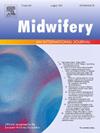樱草花项目:什么是“生理出生”?探索澳大利亚护理人员和分娩人员的看法:一项定性描述性研究。
IF 2.5
3区 医学
Q1 NURSING
引用次数: 0
摘要
背景:“生理性分娩”作为一个术语缺乏一致性,世界卫生组织1997年的现行定义没有考虑到妇女/分娩人的观点。个体对生理性分娩的不同理解可能会使护理提供和生理性分娩的倡导复杂化。目的:从澳大利亚妇女/分娩人员、助产士、产科医生和助产师的角度探讨当代对生理性分娩的理解,并确定“生理性分娩”共识声明中包括的重要因素。方法:采用焦点小组法和访谈法进行定性描述性研究。数据录音,逐字转录,并使用NVivo软件进行主题分析。结果:10名参与者参加了本研究。确定了三个总体主题:(1)与出生自然过程的联系,(2)决策要素,(3)分娩环境中的挑战。与会者一致认为,“自然分娩”和“顺产”是重要的术语,应纳入关于生理分娩的共识声明。妇女/接生人员、助产士和助产师认为生理分娩是一个自然过程,不受干预;然而,“干预”一词的使用是模糊的。关于生理分娩的产前教育被认为是缺乏的,生理分娩被认为不是一个“女性术语”。参与者承认,人们对分娩有一种基于恐惧的说法,医院环境中的“繁文缛节”可能会挑战产妇的选择。结论:相信本能分娩是生理分娩的重要因素。对“生理出生”一词的多种理解延伸到用来定义它的术语。本文章由计算机程序翻译,如有差异,请以英文原文为准。
The PRIMROSE project: What is ‘physiological birth’? Exploring the perceptions of care providers and birthing persons in Australia: A qualitative descriptive study
Background
‘Physiological birth’ as a term, lacks consistency, and the current definition from the World Health Organization in 1997 does not consider the viewpoint of women/birthing persons. Differences in individual interpretations of physiological birth may complicate care provision and the advocation of physiological birth.
Aim
To explore the contemporary understanding of physiological birth from the perspective of women/birthing persons, midwives, obstetric doctors, and doulas in the Australian setting, and identify important elements to include in a consensus statement of ‘physiological birth’.
Methods
A qualitative descriptive study was undertaken using focus groups and interview. Data was audio-recorded, transcribed verbatim, and was thematically analysed using NVivo software.
Results
Ten participants took part in this study. Three aggregate themes were identified: (1) Connection to the natural process of birth, (2) Elements of decision, and (3) Challenges in the birthing setting. Participants agreed that ‘spontaneous onset’ and ‘vaginal birth’ were important terms to include in a consensus statement of physiological birth. Women/birthing persons, midwives and doulas believed physiological birth was a natural process, uninterrupted by intervention; however, the use of the term ‘intervention’ was amorphous. Antenatal education about physiological birth was identified as lacking, and physiological birth was considered not to be a ‘woman’s term’. Participants acknowledged a fear-based narrative around childbirth, and that ‘red tape’ within the hospital setting could challenge maternal choice.
Conclusion
Trusting in instinctive labour and birth is an important element of physiological birth. Multiple understandings of the term ‘physiological birth’ extend into the terms used to define it.
求助全文
通过发布文献求助,成功后即可免费获取论文全文。
去求助
来源期刊

Midwifery
医学-护理
CiteScore
4.50
自引率
7.40%
发文量
221
审稿时长
13.4 weeks
期刊介绍:
Midwifery publishes the latest peer reviewed international research to inform the safety, quality, outcomes and experiences of pregnancy, birth and maternity care for childbearing women, their babies and families. The journal’s publications support midwives and maternity care providers to explore and develop their knowledge, skills and attitudes informed by best available evidence.
Midwifery provides an international, interdisciplinary forum for the publication, dissemination and discussion of advances in evidence, controversies and current research, and promotes continuing education through publication of systematic and other scholarly reviews and updates. Midwifery articles cover the cultural, clinical, psycho-social, sociological, epidemiological, education, managerial, workforce, organizational and technological areas of practice in preconception, maternal and infant care.
The journal welcomes the highest quality scholarly research that employs rigorous methodology. Midwifery is a leading international journal in midwifery and maternal health with a current impact factor of 1.861 (© Thomson Reuters Journal Citation Reports 2016) and employs a double-blind peer review process.
 求助内容:
求助内容: 应助结果提醒方式:
应助结果提醒方式:


